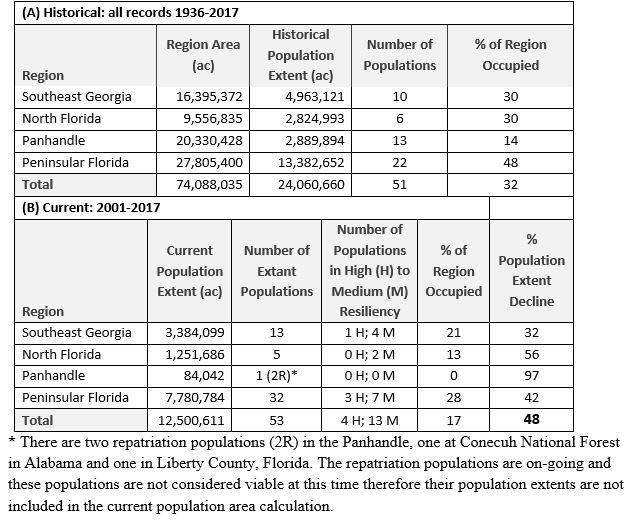Redundancy is characterized by having multiple, resilient populations distributed within the species’ ecological setting and across the species range. Redundancy reduces the risk that a large portion of the species range will be negatively affected by a natural or human-caused catastrophic disturbance.
We assessed eastern indigo snake redundancy by evaluating the number of populations and the extent for both the historical and current distribution of populations. The total number of current populations is 53. Although there were 51 historical populations, the current abundance of populations represents fragmentation of the historically larger populations into multiple, smaller populations, especially in Peninsular Florida (Figure 21, see section 5.1). Thirty (30) of the historical 51 populations are extirpated (59%) (Appendix B, Table B3). Population extent has declined in all regions with a 48% decline across the species’ historical range. Southeast Georgia has 1, and Peninsular Florida has 3 highly resilient populations as well as multiple medium resilient populations (Table 6). The Panhandle and North Florida regions have zero (0) highly resilient populations, thus limiting overall redundancy. This is important for the species, especially for the North Florida region, because loss of redundancy in these areas limits connectivity to the other regions. Of extant populations across all regions, 17% of the total population extent (area) has high, 34% has medium, 45% has low, and 4% has very low resiliency (Table 7).


